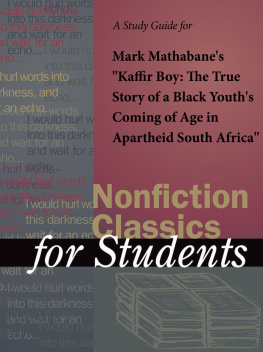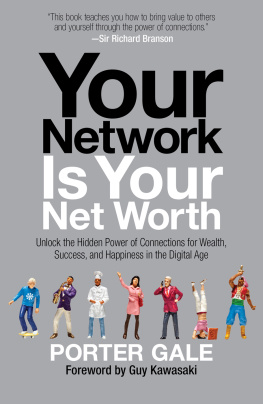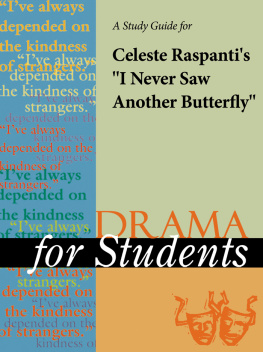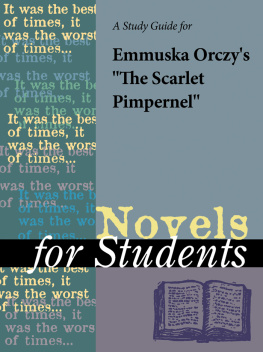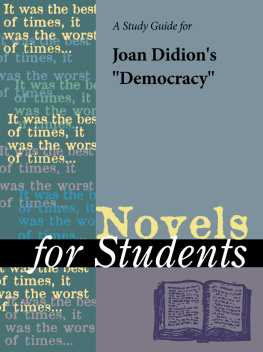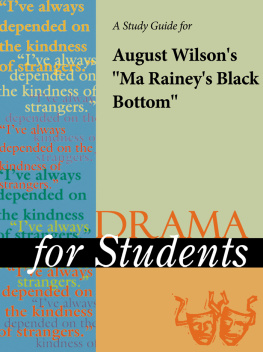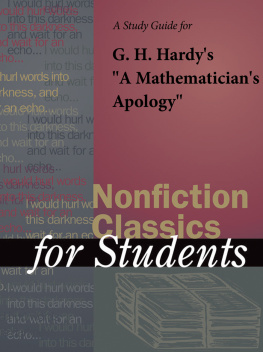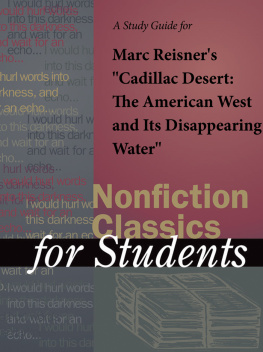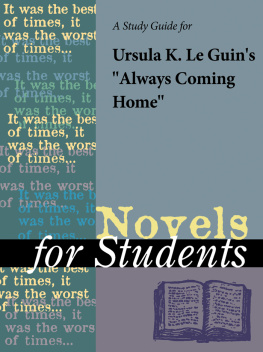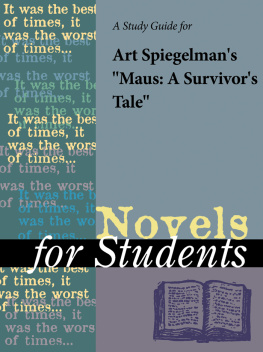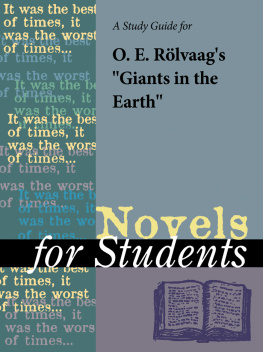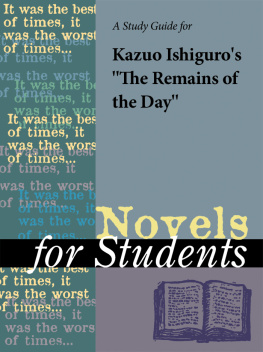TABLE OF CONTENTS
Guide
Nonfiction Classics for Students, Volume 4
Project Editor
David Galens
Editorial
Sara Constantakis, Anne Marie Hacht, Michael
L. LaBlanc, Ira Mark Milne, Pam Revitzer,
Jennifer Smith, Daniel Toronto, Carol Ullmann
Permissions
Kim Davis, Debra Freitas
Manufacturing
Stacy Melson
Imaging and Multimedia
Lezlie Light, Kelly A. Quin, Luke Rademacher
Product Design
Pamela A. E. Galbreath, Michael Logusz
2002 by Gale. Gale is an Imprint of The Gale Group, Inc., a division of Thomson Learning Inc.
Gale and Design and Thomson Learning are trademarks used herein under license.
For more information, contact
The Gale Group, Inc.
27500 Drake Rd.
Farmington Hills, MI 48331-3535
Or you can visit our Internet site at
http://www.gale.com
ALL RIGHTS RESERVED
No part of this work covered by the copyright hereon may be reproduced or used in any form or by any meansgraphic, electronic, or mechanical, including photocopying, record-ing, taping, Web distribution, or information storage retrieval systemswithout the written permission of the publisher.
For permission to use material from this product, submit your request via Web at http://www.gale-edit.com/permissions, or you may download our Permissions Request form and submit your request by fax or mail to:
Permissions Department
The Gale Group, Inc.
27500 Drake Rd.
Farmington Hills, MI 48331-3535
Permissions Hotline:
248-699-8006 or 800-877-4253, ext. 8006
Fax: 248-699-8074 or 800-762-4058
Since this page cannot legibly accommodate all copyright notices, the acknowledgments constitute an extension of the copyright notice.
While every effort has been made to ensure the reliability of the information presented in this publication, The Gale Group, Inc. does not guarantee the accuracy of the data contained herein. The Gale Group, Inc. accepts no pay-ment for listing; and inclusion in the publica-tion of any organization, agency, institution, publication, service, or individual does not imply endorsement of the editors or publisher. Errors brought to the attention of the publisher and verified to the satisfaction of the publisher will be corrected in future editions.
ISBN 0-7876-6033-7
ISSN 1533-7561
Printed in the United States of America
10 9 8 7 6 5 4 3 2 1
Kaffir Boy: The True Story of a Black Youth's Coming of Age in Apartheid South Africa
Mark Mathabane
1986
Introduction
Mark Mathabane's Kaffir Boy: The True Story of a Black Youth's Coming of Age in Apartheid South Africa was the first widely published South African autobiography written in English by a black native. Macmillan's initial 1986 American publication stunned readers in much the same way Frederick Douglass's 1845 slave narrative had, forcing many to rethink American support of South African business and government. Earlier, Mathabane had begun to publish various essays and articles to educate Americans about the horrors of apartheid. When two of his brothers-in-law were shot and killed at point-blank range by a black police officer, he feared that the murders might have been a retaliation to one of his recently published Newsday articles. He agonized over the harm his political writing might bring to his family who still remained at home in Alexandra, but he knew that ignoring racial intimidation and violence would not make them go away. In his preface, Mathabane explains that Kaffir Boy was his attempt to make the world understand that apartheid had to be abolished because it could not be reformed.
Kaffir is a derogatory name whites use for blacks in South Africa. "The word Kaffir is of Arabic origin. It means 'infidel.' In South Africa it is used disparagingly by most whites to refer to blacks. It is the equivalent of the term nigger. I was called a 'Kaffir' many times," says Mathabane in an explanatory note that precedes the autobiography.
A chance reading of the book by Oprah Winfrey moved her to buy the film rights and arrange a family reunion with Mathabane and his family as guests on her show. Afterwards, his popularity and literary success skyrocketed. Kaffir Boy quickly became a national bestseller, translated into seven languages. Guest appearances on numerous television shows and riveting university lectures soon made Mathabane a sought-after speaker who continued to use words to prick the consciences of his listeners. By the year 2000, he had published four more works of nonfiction. Like Kaffir Boy, they too would address mankind's pressing need to abolishonce and for allracial injustice, child abuse, spouse abuse, alcoholism, illiteracy, poverty, and disease.
Author Biography
Mark Mathabane was born October 18, 1960, in Alexandra, a black ghetto just outside Johannesburg, South Africa. His parents gave him an official Afrikaans name, Johannes, and a tribal name, Thanyani ("the wise one"). As a child, he lived in an unheated two-room shack where the children slept under the kitchen table on makeshift beds of newspaper and cardboard. There was no electricity, no running water, no sewers or indoor toilets. The family suffered from bitter cold and hunger. They lived in constant fear of brutal police raids designed to enforce apartheid (the legalized segregation of blacks and whites) through intimidation and violence. At five, as the caretaker of his younger siblings during his parents' absence, Mathabane was often forced to roam the ghetto for food and an outlet from boredom. Unfortunately, food was scarce, often nonexistent, while boredom could easily, often dangerously, be alleviated. Only his keen intellect and superb athletic abilities enabled him to survive. During the Soweto riots of 1976, he took the name Mark Mathabane (and later, Pierre Mark Mathabane), in order to disguise his identity from the white South African government.
In 1978, Wimbledon champion Stan Smith helped Mathabane secure a tennis scholarship to Limestone College in Gaffney, South Carolina. He later transferred to St. Louis University, Missouri, and then to Quincy College, Illinois, before graduating from Dowling College, New York, in 1983. Inspired by the autobiographies of Richard Wright and Claude Brown, Mathabane began to write his own. Initially published by Macmillan in 1986, Kaffir Boy became a nation-wide bestseller, selling more than two hundred thousand copies by 1989. Its translation into seven languages has secured Mathabane's reputation not only as a writer but also as a humanist and public speaker. Recipient of both the 1986 Christopher Award and a 1996-1997 White House Fellowship, Mathabane helped design President Clinton's education initiatives. He was the speaker for the 2001 Martin Luther King, Jr. Community Award and has appeared on numerous television shows. His fifth book, Miriam's Song, was short-listed for the 2001 Alan Paton award.
Mathabane has published five works of nonfiction. Kaffir Boy is the story of his first eighteen years, growing up under apartheid. Kaffir Boy in America relates the story of his college experience and the beginning of his writing career.

